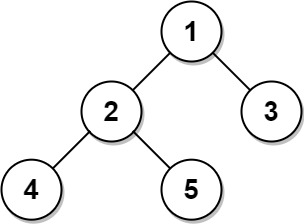
g0601_0700.s0608_tree_node.readme.md Maven / Gradle / Ivy
608\. Tree Node
Medium
SQL Schema
Table: `Tree`
+-------------+------+
| Column Name | Type |
+-------------+------+
| id | int |
| p_id | int |
+-------------+------+
id is the primary key column for this table.
Each row of this table contains information about the id of a node and the id of its parent node in a tree.
The given structure is always a valid tree.
Each node in the tree can be one of three types:
* **"Leaf"**: if the node is a leaf node.
* **"Root"**: if the node is the root of the tree.
* **"Inner"**: If the node is neither a leaf node nor a root node.
Write an SQL query to report the type of each node in the tree.
Return the result table **ordered** by `id` **in ascending order**.
The query result format is in the following example.
**Example 1:**

**Input:**
Tree table:
+----+------+
| id | p_id |
+----+------+
| 1 | null |
| 2 | 1 |
| 3 | 1 |
| 4 | 2 |
| 5 | 2 |
+----+------+
**Output:**
+----+-------+
| id | type |
+----+-------+
| 1 | Root |
| 2 | Inner |
| 3 | Leaf |
| 4 | Leaf |
| 5 | Leaf |
+----+-------+
**Explanation:**
Node 1 is the root node because its parent node is null and it has child nodes 2 and 3.
Node 2 is an inner node because it has parent node 1 and child node 4 and 5.
Nodes 3, 4, and 5 are leaf nodes because they have parent nodes and they do not have child nodes.
**Example 2:**

**Input:**
Tree table:
+----+------+
| id | p_id |
+----+------+
| 1 | null |
+----+------+
**Output:**
+----+-------+
| id | type |
+----+-------+
| 1 | Root |
+----+-------+
**Explanation:** If there is only one node on the tree, you only need to output its root attributes. © 2015 - 2025 Weber Informatics LLC | Privacy Policy